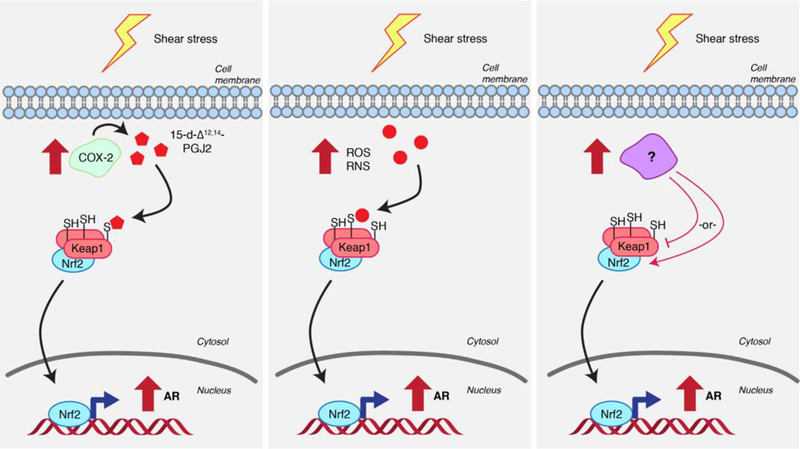Figure 3.

The challenge of deconvoluting redox signaling pathways: three possibilities to engender AR upregulation under shear stress. (Left) Shear stress upregulates COX-2 activity, leading to the generation of 15-d-Δ12,14-PGJ2 (Refer to Figure 2 for structure). 15-d-Δ12,14-PGJ2 modifies Keap1, leading to AR upregulation. (Center) Shear stress upregulates ROS/RNS, which directly modify Keap1 and cause AR upregulation. (Right) An unknown factor affected under shear stress regulates Keap1 or Nrf2 (or other interconnected players) to upregulate AR.
